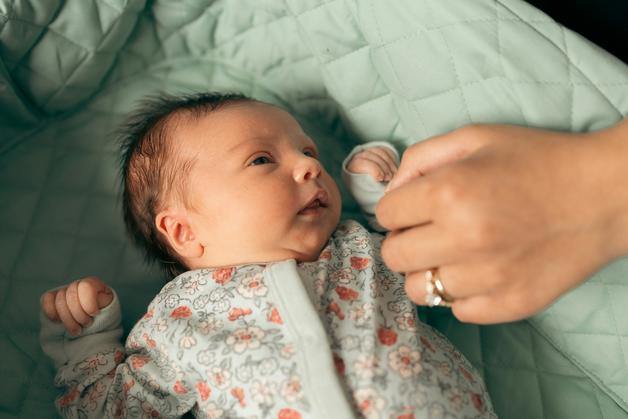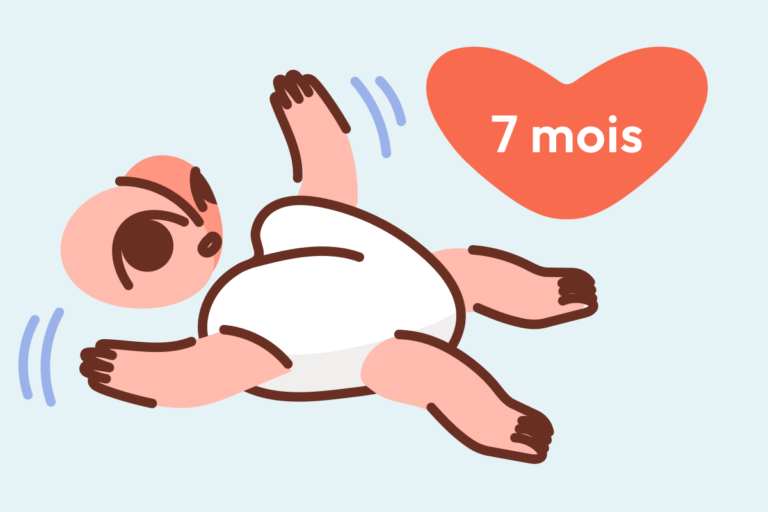The first few weeks with your 1 month old baby can feel like stepping into a world filled with new rhythms, bursts of activity, and—let’s be honest—a steady stream of questions. Is that cry just hunger or something more? Is this pattern of sleep typical, or should you worry? And when those tiny fingers grip your hand, does it mean anything at all? Raising a newborn means navigating long nights, periods of wonder, and that quiet thrill when you spot the earliest smile or hear the first coo. Here’s a deep dive into the key stages of growth and care for your 1 month old baby—covering everything from feeding frequency and sleep cycles to physical development and emotional well-being.
What to Expect: Your 1 Month Old Baby at a Glance
Those fleeting newborn reflexes—the Moro reflex (or startle reflex), rooting, and sucking—dominate your baby’s daily experience right now. Most movements are spontaneous, with hands typically balled tightly into fists and legs making involuntary kicks. Yet, amid these reflexes, you’ll gradually notice moments of control. For example, during supervised tummy time, your baby might briefly lift their head—a subtle nod to strengthening neck muscles for the milestones ahead. Visual focus remains quite limited; newborn eyes are drawn to objects 8–12 inches away, so your face, especially when you’re up close for a cuddle or feeding, becomes a captivating sight.
Feeding is frequent and somewhat unpredictable—a healthy 1 month old baby wants breast milk or infant formula every two to four hours, sometimes even more. Recognizing the subtle difference between hunger cues and “just because I want comfort” is not easy at first. Sometimes, it’s the classic rooting reflex (head turning and mouth searching), other times merely a soft smacking of lips. If diapers are coming at you at a rate of at least four to six per day and weight gain is steady, your baby is thriving.
Sleep sits front and centre: new parents quickly learn that a 1 month old baby rarely follows the clock. Sleep episodes, scattered over 24 hours, add up to 14–17 hours per day, seldom in long stretches. Intervals between snoozes serve as precious windows for gentle play and bonding.
Key Developmental Stages at One Month
Physical Growth and Reflexes
A thriving 1 month old baby may add roughly 600 grams (or 1.3 pounds) to their birth weight and see an increase in head circumference—a reflection of robust brain growth. Not every infant grows at the same pace, but if your baby’s nappies are soaked regularly and the numbers on the weighing scale keep climbing, the pattern is reassuring.
Expect primitive reflexes to remain on display:
- The Moro reflex: arms flailing outward then coming back in when startled.
- The grasp reflex: small fingers curling firmly, even over your thumb.
- Rooting and sucking when the cheek is stroked, or the mouth is touched.
If you place your baby on their tummy (always under supervision, never unsupervised for sleep), head may turn side-to-side and maybe, with effort, lift for a brief moment. This is the groundwork for head control.
Early Fine Motor Skills and Sensory Awareness
Fine motor skills are mostly involuntary. Hands clenched into fists, occasional stretching, and—just sometimes—a fleeting attempt to grasp a soft rattle. Support exploration by offering safe, lightweight and easy-to-hold toys.
The sense of hearing matures quickly. Your baby may react to loud noises with a startle, or quieten at the sound of your voice, already searching for reassurance in familiar tones. Eye contact, although brief, becomes more frequent. Colourful, high-contrast patterns or simple black and white shapes can catch attention and help visual development, especially when keeping objects in that magical 8–12 inches sweet spot.
Cognitive Development and Early Communication
While cognitive development is just starting, a 1 month old baby can already follow slowly moving objects with their eyes and responds to light and movement. You might notice baby’s gaze tracking your face during feeds—that intense concentration is a form of early social learning.
Communication in this phase mostly means crying. Hunger, discomfort, fatigue, or the need for comfort—these messages are sent via different types of cries. Gradually, you may also hear softer coos and gurgles. When your baby makes those first noises, responding with gentle words or soft songs encourages continued vocal experimentation.
Structuring the Day: Feeding, Awake Time, and Sensory Play
Optimising Awake Windows
Awake periods in a 1 month old baby often last 30–60 minutes, sometimes a touch longer. These pockets of alertness are golden opportunities for skin-to-skin contact, gentle facial massages, talking, singing, or simply sharing eye contact. Supervised tummy time remains essential, promoting neck muscle strength and the foundations for future milestones like rolling and sitting.
Play does not require fancy gadgets. A colourful mobile, safe play mat, songs sung in any tune, and the sight of your face offer top-tier stimulation. Respond to early smiles—even reflex ones—with your own; positive feedback through touch and voice nurtures the emotional bond.
Feeding Frequency and Hygiene
For a 1 month old baby, feeding is both sustenance and comfort. Breastfed infants generally feed 8–12 times a day, sometimes for at least ten minutes per breast each session. Formula-fed babies usually take a bottle every three to four hours, often consuming 4–5 ounces per feed. Let your baby set the pace, and do not worry about stretching intervals too early.
Good hygiene prevents infections:
- Wash hands before preparing bottles or handling the baby.
- If bottle-feeding, clean bottle parts thoroughly in hot water or a dishwasher (keep it above 60°C).
- Breastfeeding parents need not wash breasts before every feed, but keeping overall hygiene is helpful.
- Avoid microwaving bottles, which can cause uneven heating.
Vitamin D supplementation is advised for all infants, as even formula-fed babies may not meet requirements through milk alone. Vitamin K, vital for blood clotting, is usually administered at birth, but check with your paediatrician regarding additional needs.
Daily Care Routines: Diapers, Bath, and Skin
Diapering and Skin Health
Expect to change diapers every 2–3 hours or immediately after soiling. Use lukewarm water or alcohol-free wipes, followed by a gentle barrier cream if redness appears. If you notice fewer than four wet diapers in a day, this might signal inadequate hydration—time to consult your healthcare provider.
Bathing and Cord Care
Bath time doesn’t need to be daily—two or three weekly baths keep your baby fresh. Water temperature should hover near body temperature (37°C). Mild, hypoallergenic cleansers and a warm room help prevent chills. If the umbilical cord stump is still attached, keep it dry and clean, cleansing gently as instructed by your paediatrician.
Nail Care and Cradle Cap
Nails grow fast and can scratch delicate skin. Trim with rounded scissors after a bath when nails are soft, or use an emery board. If you spot cradle cap—those flaky, yellowish patches on the scalp—massage a little vegetable or mineral oil before bath, then gently brush to loosen scales.
Understanding Sleep Patterns in a 1 Month Old Baby
Unpredictable But Vital Sleep
Total sleep time for a 1 month old baby ranges 14–17 hours over 24 hours. These stints are short, rarely lasting more than a couple of hours. Your baby will wake for feeds, comfort, and sometimes with no obvious reason. Crying during sleep is common; newborn sleep cycles are unsynchronised and arousals happen easily, triggered by minor discomforts or hunger.
Safe Sleep Environment
Place your baby on their back on a firm, safety-approved mattress—no pillows, blankets, or toys. Swaddling can provide a calming cocoon, but hands should be free enough for movement and careful monitoring is essential. Room-sharing, not bed-sharing, reduces the risk of sudden infant death syndrome (SIDS). Ideal room temperatures hover between 20–22°C (68–72°F), and the sleeping environment should always be smoke-free.
Monitoring Growth and Health
Weight and length gains signal well-being. Watch for consistent weight increase: typically 1.5–2 pounds gained, 1–1.5 inches in length, and a 1.25 cm head circumference increase by the end of the first month. Consistent, regular pattern of wet nappies and satisfied feeding usually means everything is progressing as expected.
Stool patterns shift from sticky black (meconium) to yellow and loose (breastfed) or thicker, brownish (formula-fed). A 1 month old baby may poop after every feed or skip several days—either can be normal. However, red, black, white, or very hard stools warrant a paediatrician’s attention.
Look for warning signs:
- Rectal temperature at or above 38°C (100.4°F): immediate medical attention is necessary.
- Poor feeding, vomiting, lethargy, or bluish skin colour also prompt urgent evaluation.
- Any persistent refusal to feed, excess sleepiness, or unusual crying may indicate underlying issues requiring direct assessment.
Comfort, Stimulation, and Safety
A safe environment is always top priority. Sleep space with a firm mattress, no excess bedding, bumpers, or toys. Always use a rear-facing car seat for travel—fit matters more than brand, and straps should be snug but not tight. Bath time supervision is non-negotiable—never leave your baby unattended. Keep water temperature below 38°C, and always check with your elbow before gently lowering the infant.
Bonding and sensory exposure can be delivered through:
- Skin-to-skin cuddling after feeds.
- Gentle rocking or swaying.
- Talking, singing, or playing soft music.
- Visual stimulation via bold patterns, quaint mobiles, or even your bright scarf.
Supporting Parental Well-being
The early postpartum period is often turbulent: erratic sleep, mood swings, and a cocktail of emotions. Prioritise breaks when possible—rest when your baby sleeps, snack regularly, and keep hydrated. Build a reliable support system, whether it’s family, friends, or parent networks. If sadness, lethargy, or anxiety become overwhelming or persist, discussing experiences with a trusted health professional is wise. Remember, expectations can be adjusted—each day brings new lessons for both baby and parent.
Key Takeaways
- Every 1 month old baby moves at their unique pace. Comparing with others serves little purpose; watch for patterns in feeding, sleep, and growth instead.
- Frequent feeding—on demand—provides enough nutrition and comfort. Both breastfeeding and formula have specific recommendations; always observe your baby’s cues.
- Safe sleep routines, regular nappy changes, gentle bathing, and careful skin care lay the foundation for overall health.
- Daily interactions—skin-to-skin contact, talking, or brief play—accelerate emotional and cognitive growth.
- Professional support is accessible for all questions—unusual symptoms or persistent worries should be checked by a healthcare provider.
- Parental well-being deserves as much attention as infant care; support, rest, and self-compassion matter.
- For tailored advice and health questionnaires, consider the Heloa application.
Questions Parents Ask
How can I help my 1 month old baby develop good vision?
A newborn’s visual range is limited, best focused at about 8–12 inches. Encouraging vision development is straightforward: bring bold black-and-white patterns close to your baby’s face, move slowly from side to side, and make frequent eye contact during cuddles and feeds. Over time, gentle tracking of your movement builds visual skills. It’s perfectly normal for newborns to seem unfocused; every short interaction—your smile, your voice, the contrast of your clothing—contributes to their burgeoning senses.
What should I do if my 1 month old baby has trouble latching during breastfeeding?
Challenges are quite common and, frankly, can be worrying in the early weeks. Positioning is key—keep your baby and yourself as comfortable as possible, perhaps using a nursing pillow or even relaxing with skin-to-skin contact beforehand. Look for feeding signals like rooting before your baby gets too upset. Adjustments take time, and if pain or frustration persists, consulting a lactation consultant or paediatrician may make things smoother. Sometimes a minor tweak in approach works wonders.
Is it normal for my 1 month old baby to start cooing or making sounds?
Absolutely. Early vocalisations—coos, sighs, and little murmurs—are an exciting sign. Even if these sounds are few and far between at first, they signal your baby’s earliest steps in communication. Respond in kind: smile, talk back, or share a gentle tune. Should your infant be quieter, there’s usually no need to worry; every 1 month old baby finds their own rhythm. These tiny exchanges are the building blocks of later language development.
Further reading:









